ATLAS Expo 2024

Thursday, May 2, 2024, 4:00 - 6:00 pm, Roser ATLAS Center (Free!)
Every year, Creative Technology and Design students take over the Roser ATLAS Center at CU Boulder to showcase the engineering projects they've been working on all semester. Save the date for this year's extravaganza! (Add event to Google Calendar)
ATLAS Expo is your chance to go hands-on with games, electronics, AR/VR, interactive and immersive experiences, fabrication, motion capture, and much more. Explore projects across three floors and inside our research facilities. Get to know the students and faculty who make our institute so vibrant and check out some of the labs leading groundbreaking research across many disciplines.
Featured Expo 2024 Creative Engineering Projects
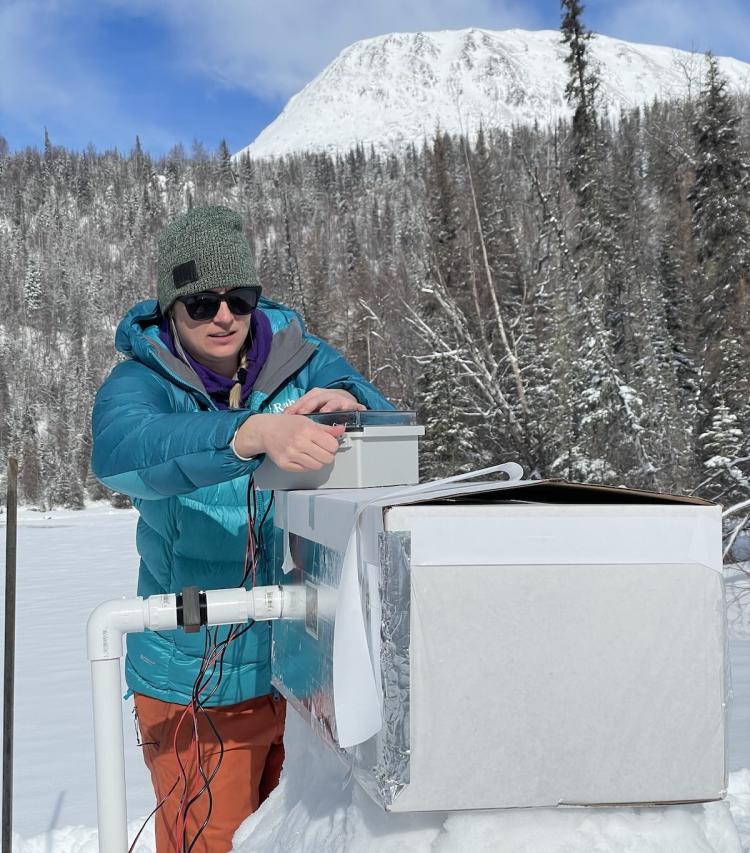
Antarctica Cold Box
Kate Rooney (MS student)
Antarctica Cold Box is a refrigerator designed for polar field camps to keep food and ice cores at regulated temperatures. It utilizes cold air from the snow about 2m below the surface to offset thermal gain from the sun and control the temperature in the box.
What inspired you to make this project?
Working with Field Camps in the US Antarctica program, I've seen some of the challenges of regulating temperatures in extreme environments. Utilizing the environment's natural resources via filtering air through snow is an innovative way to regulate cold temperatures without relying on labor-intensive methods like freezer caves or traditional refrigeration. Ultimately, my inspiration came from the desire to create a simple, environmentally friendly solution for cold storage at our Antarctica Camps.
What excites you most about it?
The potential for real-world impact excites me most about the Antarctica Cold Box. After successfully completing the proof-of-concept project, I'm eager to test the updated version next year at our Field Camps in Antarctica. Another goal is to scale up the design to provide an effective and environmentally friendly way to store ice cores, which are crucial for scientists studying the history of climate and atmosphere.
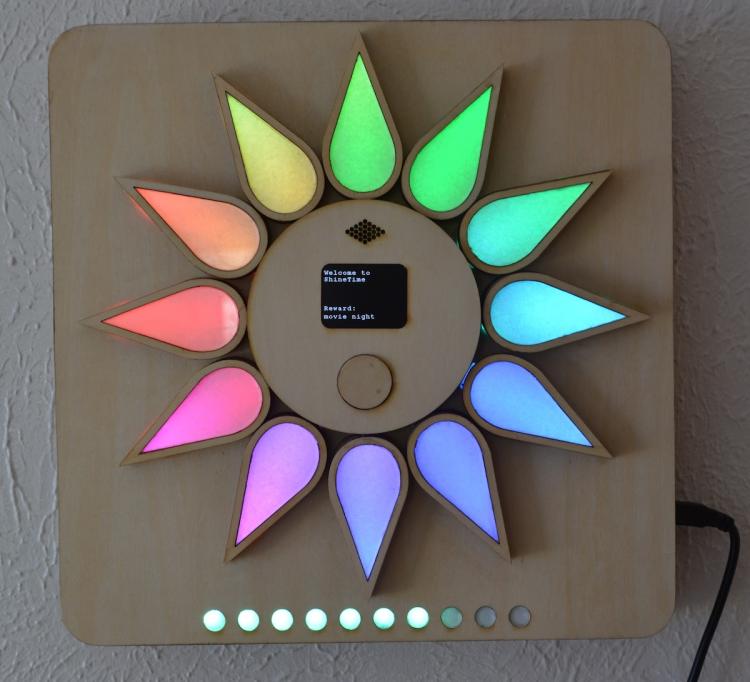
ShineTime
Kaila Ho (BS student)
ShineTime is a tool for families of children with ADHD designed to help parents guide their child through better understanding time management and task accomplishment. The project combines physical and digital components to create an engaging and productive experience.
What inspired you to make this project?
Ever since working on a project my freshman year where our client was a teacher of students with autism, I have developed a passion for assistive technology and its ability to have a positive impact on real people. This project was a great opportunity to further explore that concept while advancing my skills in product design, user experience design and various technical skills.
What excites you most about it?
What excites me most about this project is that it still has so much opportunity to grow and add new modes and features. I hope it inspires some thought and discussion around how time management is addressed within the ADHD community. With more research and community outreach, I think this project could have a bigger impact.
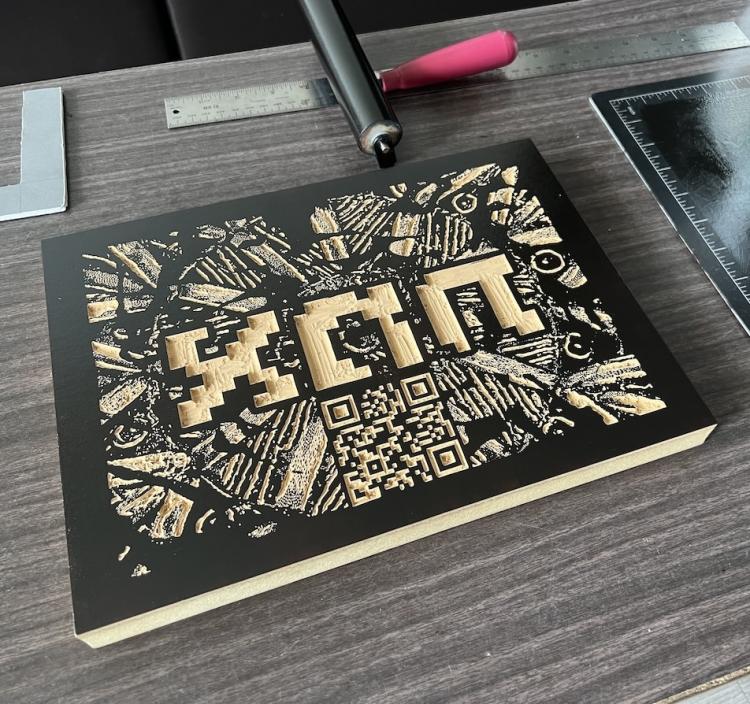
How To Make A Golem
Max Epperson (BS student)
How To Make A Golem is a multimedia art installation with video, AR, and printmaking elements that bring to life my great grandmother’s story as a ceramicist and a survivor of the Holocaust. The golem from Jewish folklore is paired with her pottery as a metaphor for art that keeps stories alive and stands against any and all oppression.
What inspired you to make this project?
Much of my work is inspired by family history, and given the recent passing of my great grandmother, I wanted to create a project that both commemorates her artwork and her life and serves as a digital archive of her pottery, family photos, and her interviews. My hope is that viewers will not only be able to learn more about my great grandmother, but also take away the importance of sharing personal stories of survival like this one in order to create a more empathetic world.
What excites you most about it?
The 3D scanning aspect of this project was the most exciting part for me. Using software like Kiri Engine, Fusion 360, and Blender, I was able to bring my great grandmother's pottery into the digital world. I'm excited to show how this approach to documenting art or cultural objects can make these items more accessible to people, whether by using animation to incorporate the 3D scans into a video narrative, using AR to create interactive and web-accessible viewing experiences, or simply by creating a digital archive that I can share with family, friends, and even the University of Denver, which houses some of my great grandmother's ceramics in their collection.
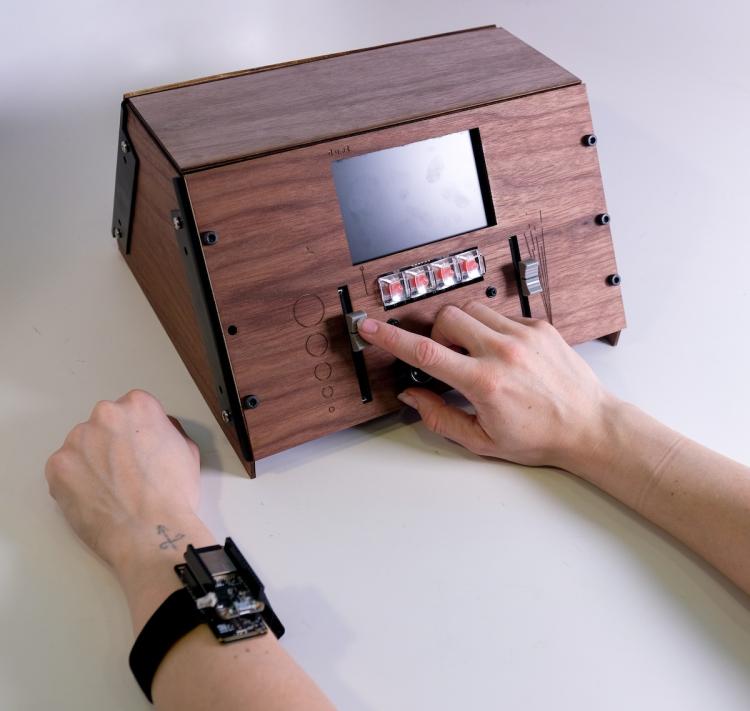
Duet
Peter Ashmore, Henry Richardson & Kyle Smith (BS students)
Duet explores the interplay of biofeedback, artistic expression, and collaborative creation through the sonification and visualization of biodata and interactive user input. In an intimate booth, two people collaborate to create a memorable shared audiovisual experience.
What inspired your team to make this project?
When brainstorming project ideas last year, all three of us were interested in the spaces created when collaboration existed as a focal point for both performance and collaboration. More specifically, we sought to create an atmosphere where non-musicians were encouraged to experiment musically without consequence. We decided to focus on the integration of a multiple of interactions -- visual, biofeedback, physical, and of course audio to create a space for collaboration and experimentation to occur between two people.
What excites you most about it?
To see people enjoy the project and walk away inspired!

Seaside Sweeper
Alexis Cisneros, Emily Henderson, Chi Chi Kari & Ashlyn Duy (BS students)
Seaside Sweeper is an open source robotics platform designed to be an affordable, educational and reproducible way to facilitate the cleaning of local beaches by budding electronics enthusiasts. Control it yourself with a remote control or give it some coordinates to have it clean the beach on its own! Complete with a 4-hour battery life and an Instructables page with over 60 images of instruction, you will be helping your local beach get cleaner with every minute you spend on your very own Seaside Sweeper.
What inspired you to make this project?
Emily: I enjoyed making a remote control car for my Object final project - it was a really fun and rewarding process! When we started Capstone idea development, I wanted to expand on that project while also bringing in a bit of home-found inspiration as well. I come from South Florida, where dirty beaches are abound & I wanted to do something about it for my ultimate CTD project. The Seaside Sweeper embodies everything I love about CTD: it was a marrying of technology with a drive (ha!) to make change!
What excites you most about it?
We love using it in RC mode! It's super fun moving the scoop and driving it around at the Boulder Reservoir. In addition, we are super excited about other people taking our open source project to the next level - we see a world filled with people building their very own custom Seaside Sweepers to not only learn about electronics, but to make their beaches cleaner!
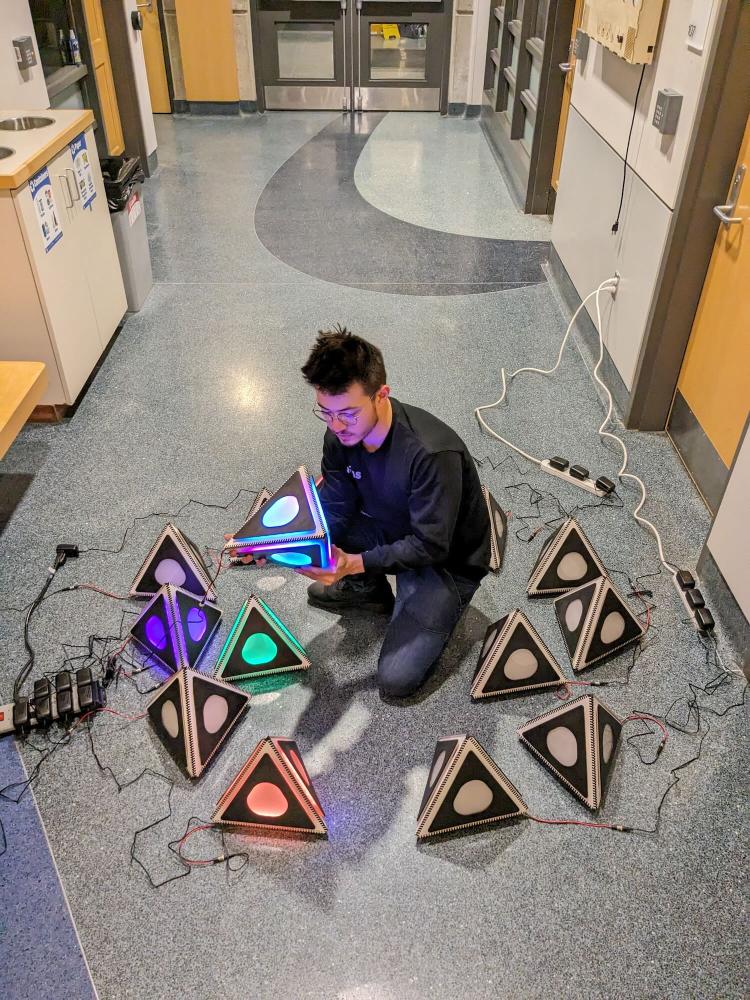
Triangulation
Perry Owens (MS student) with special thanks to Quinn Pearson (BS student) & Atlas Zaina (BS student)
Triangulation seeks to create connections throughout the widespread ATLAS community. Lanterns scattered around the building come to life in the presence of people. These lanterns correspond to a sculpture in the lobby, which portrays an aggregate map of localized activity in ATLAS.
What inspired me to make this project?
Having completed my Bachelor's Degree in CTD before continuing my education with the Master's program, I have now been with the ATLAS program for almost 6 years. During this time, I have made countless memories in the ATLAS building, and have grown so much as a student, artist, and adult. I have continuously been awed by the crazy cool creative people I have met throughout the years, and they've inspired me to contribute something back to the community that has been so influential in shaping me into the person I am today.
What excites me most about this project?
Unsurprisingly, the thematic design of Triangulation is rooted in triangles. It fascinates me how a simple geometric shape can be so thoroughly augmented through the addition of texture, light, and color. The triangular aesthetic also mirrors the prominent appearance of the many ATLAS "A" logos, which follow a consistent design language whilst maintaining individuality. Due to the multi-disciplinary studies of the CTD program, there has always been a large disconnect across the five floors of the building, and these triangles uniformly connect these scattered aspects of ATLAS.
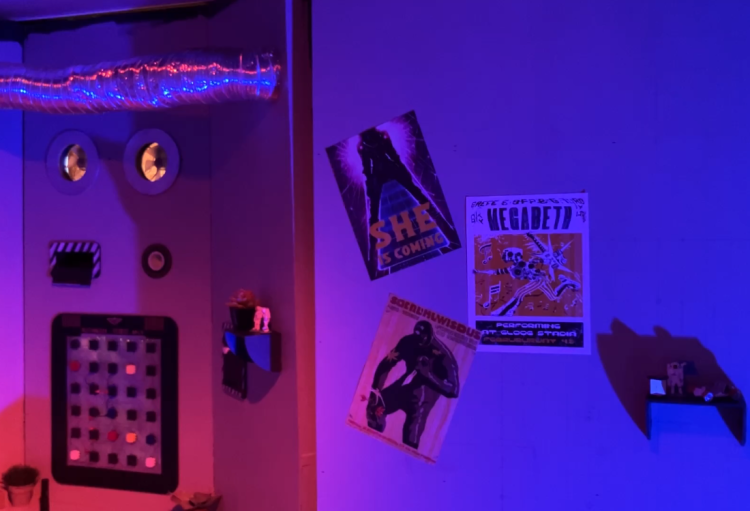
Mission to Planet C-128
Ollie Kimlicko (BS student)
Sign up to experience a science-fiction themed escape room for 1-3 players. You’ll have to face faulty electronics, locked doors, and damaged systems to complete an emergency mission before your oxygen runs out.
What inspired you to make this project?
I wanted to build something immersive that lets people feel a bit of adventure, and I was able to combine a lot of my interests into this one project. I’ve built a lot of space-themed projects in the past and this felt like my chance to build one that a lot of people could experience in a really interactive way.
What excites you most about it?
I’m excited to see other people light up when they get to experience the little world I’ve created. I can’t wait to see everyone figure out the puzzles I’ve made.
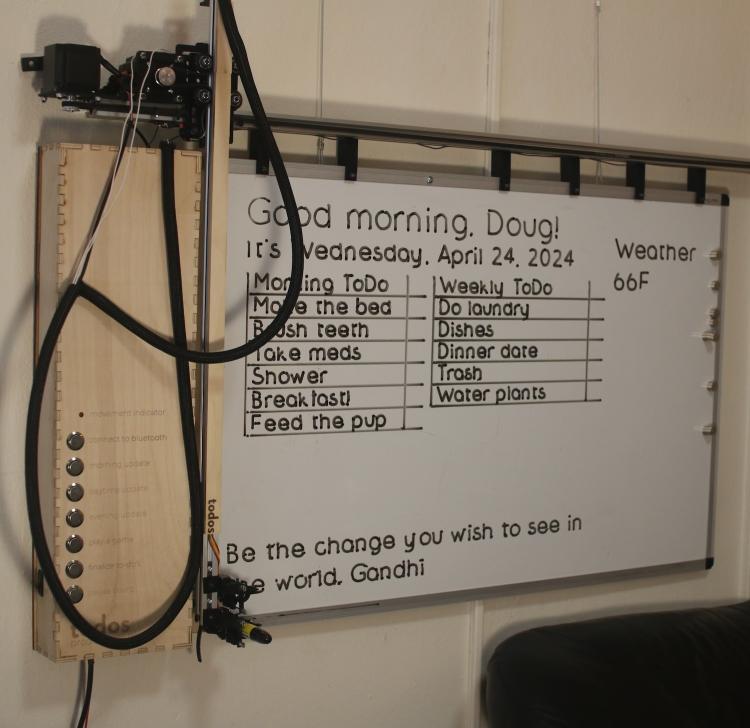
TODOS Productivity Board
Jason Fontillas, Sydney Calcagno & Henry Waill (BS students)
TODOS combines smart habit tracking with a familiar, analog interface to make productivity a more tactile experience.
What inspired you to make this project?
Many individuals experience challenges with organization and ADHD. Effective habit formation and organization require focused attention. Habit-building strategies often rely on digital platforms, which can sometimes result in more distraction or loss of focus. We wanted to create a customizable physical project that allows individuals to build habits and become organized.
What excites you most about it?
We are enthusiastic about the support the board can provide to individuals facing challenges with organization and ADHD, as it can help them achieve goals and give a more positive mental outlook on life.





